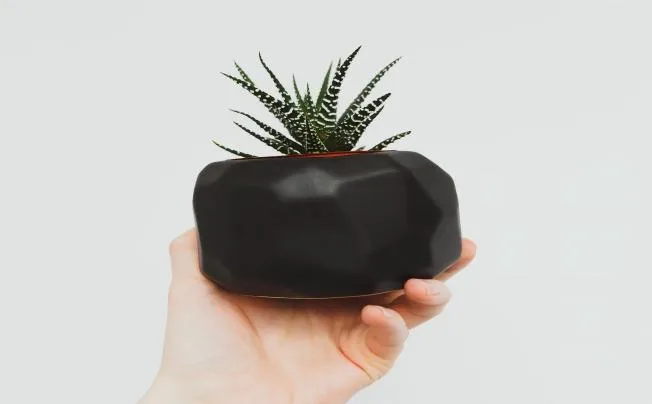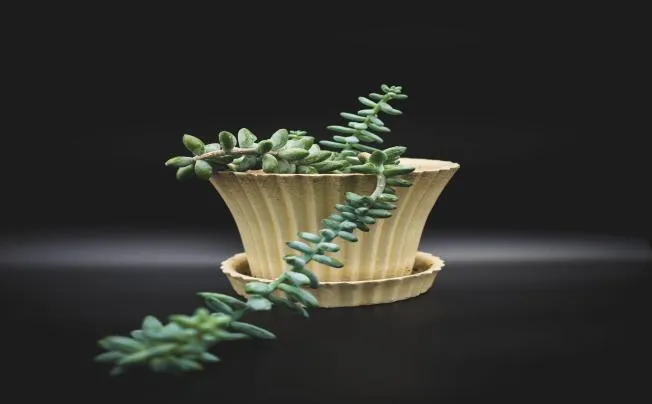What Are The Advantages And Disadvantages Of Stainless Steel Planters?
Despite all of their benefits, stainless steel flower pots have some unavoidable drawbacks. What distinguishing features set stainless steel flower pots apart from the competition, and what drawbacks can make using them less enjoyable?
Advantages of stainless steel flower pots
1. Outstanding resistance to corrosion
Chromium, one of the metals found in stainless steel, can create a thick oxide layer on the flower pot's surface, effectively blocking the metal's reaction with oxygen and moisture and avoiding rust and corrosion. Stainless steel flower pots can withstand a variety of conditions, including frequent watering in a humid environment, prolonged exposure to wind and rain outside, and even contact with some corrosive chemicals. Because of this characteristic, stainless steel flower pots are especially well-suited for usage in abrasive settings like outdoor gardens and the seashore, giving plants a solid and long-lasting development container.
2. Sturdy and robust construction
Because of the high strength and hardness of stainless steel, flower pots made of this material have a sturdy and long-lasting construction. Stainless steel flower pots are more resilient to external impact and extrusion than flower pots composed of ceramics, glass, and other materials. Accidental scraping of flower pots is significantly reduced because they are difficult to shatter or damage from thoughtless collisions or movements during regular use. At the same time, strong flower pots can better shield plant roots and offer a steady, dependable environment for root development. Furthermore, because of its endurance, flower pots need to be replaced less frequently, which is ultimately a cost-effective decision.

3. Simple to maintain and clean
Because of its flat surface, stainless steel is difficult for contaminants and dirt to stick to. Simply use a moist towel to gently wipe away any dust or stains from the surface. Using a mild detergent will help you get rid of more difficult stains. Additionally, compared to wooden flower pots, stainless steel flower pots are less likely to harbour bacteria and mould, which lessens the hygienic issues brought on by inadequate cleaning.
4. Diverse appearance design
Through advanced processing technology, stainless steel flower pots can be electroplated into a variety of colours, including classic silver, gold, rose gold, fashionable black, bronze, etc., to meet the diverse needs and colour preferences of different consumers. Additionally, stainless steel has a high degree of plasticity, allowing it to produce a wide range of complex and unique shapes, including round, square, oval, special-shaped, etc., and can be engraved, brushed, mirrored, etc. on the surface to add artistic and design sense.
5. Good physical attributes
Flower pots made of stainless steel offer good physical qualities, particularly when it comes to resistance to high and low temperatures. The material won't be distorted or harmed in the sweltering summer months, even if the flower pots are left out in the sun for extended periods of time and the temperature rises. It can also give the roots of the plants a steady growing environment. Stainless steel flower pots can also tolerate low temperatures throughout the chilly winter months and won't shatter from abrupt temperature dips. Stainless steel flower pots can be utilised in a variety of climates due to their capacity to adjust to diverse temperature situations. Whether it's frigid in the north or scorching in the south, they can be perfect plant containers. Furthermore, flower pots made of stainless steel have a modest heat conductivity. The air permeability of the soil, which is necessary for the healthy growth of plant roots, will not be impacted by it like certain materials with excessive heat preservation, nor will it produce excessive temperature variations in the roots of the plants like metals that conduct heat too quickly.
6. Eco-friendly and recyclable
One material that can be recycled is stainless steel. The flower pots can be recycled and used into other goods when they are no longer needed, which lowers resource waste and environmental damage. In contrast to some single-use plastic flower pots or ceramic flower pots that are hard to recycle, stainless steel flower pots are better equipped to recycle materials once their useful lives are over, which helps to safeguard the environment.

Disadvantages of stainless steel flower pots
1. High thermal conductivity
Because of its high thermal conductivity, stainless steel can sometimes have a negative impact on plant growth. When exposed to intense sunlight during the hot summer months, the stainless steel flower pots will absorb heat quickly and transfer it to the soil, possibly raising the soil temperature above the ideal range for plant roots to grow in. This can disrupt the normal physiological function of the root system, so you can take steps like wrapping the flower pot in insulation materials like foam boards, insulation cotton, etc., or placing shade nets around the flower pots to lessen the effect of direct sunlight on the temperature of the flower pots.
2. A comparatively high cost
The cost of stainless steel flower pots is typically more than that of standard flower pots made of plastic, ceramic, or wood. Furthermore, making stainless steel flower pots is a more sensitive procedure that frequently calls for several steps, including cutting, welding, grinding, and electroplating. Certain stainless steel flower pots, particularly those with intricate designs and unusual shapes, have higher production needs, which raises labour expenses. The greater cost of stainless steel flower pots could be a significant deterrent for large-scale gardeners or customers with tight budgets.
3. Scratching the surface is simple
It is relatively easy to scratch the surface of stainless steel flower pots, particularly those that have been colour electroplated. The flower pots' surfaces may get scratches from rubbing or colliding with other objects during regular use and transit. Not only will these scratches diminish the flower pots' aesthetic appeal by causing them to lose their original glossy, smooth look, but they may also weaken the electroplating layer's ability to resist corrosion. While polishing and other techniques can be used to fix minor scratches, they also come with expenses and need specific operational expertise.

Selected Blogs
-
What customization services are available for metalworking customization?
2024-12-12
-
What Is The Difference Between A Plant Container And A Raised Bed?
2024-04-23
-
Garden Screening & Fence Panels
2024-04-23
-
Gardening pot selection tips
2024-04-17
-
The function and collocation of horticultural fire pot
2024-04-17


